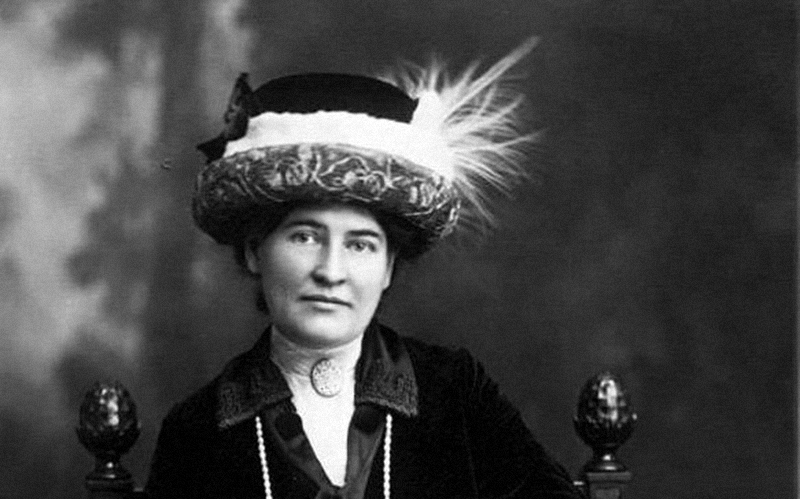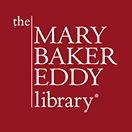Women of History: Willa Cather

Willa Cather circa 1912. Photographer: Aime Dupont Studio, New York. Courtesy of Wikimedia Commons.
Willa Cather (1873-1947) is one of America’s greatest novelists. While she is primarily known for works that celebrate the Western United States—such as My Ántonia, One of Ours (for which she won the Pulitzer Prize in 1923), and Death Comes for the Archbishop—she also has a Boston connection that ties into the collections of The Mary Baker Eddy Library:
Late one brilliant April afternoon Professor Lucius Wilson stood at the head of Chestnut Street …. He crossed Charles Street between jangling street cars and shelving lumber drays, and after a moment of uncertainty wound into Brimmer Street. The street was quiet, deserted, and hung with a thin bluish haze….1
These lines reflect Cather’s impressions of Boston, where she lived on and off for over a year from late 1906 to 1908. She came to the city as a staff editor for McClure’s Magazine. She was working on a series titled “The Life of Mary Baker G. Eddy and the History of Christian Science.” This series was republished as a book in 1909 and has had an enduring influence on biographies and perceptions of Eddy, in spite of its many historical inaccuracies. This is perhaps due in part to Willa Cather’s contested role as the series author or copy editor.
The press was fascinated by Christian Science and its founder. Eddy, who had grown wealthy through her own efforts as a teacher and author, was now in her 80s and was still leading her growing church from her home in Concord, New Hampshire. Many wondered how a woman had come into such a position of power.
Georgine Milmine, a journalist from upstate New York, decided to investigate, focusing her interviews on those who could provide sensational but rarely true recollections of Eddy. Archival evidence indicates that in late 1904 Milmine went to New York City, to see Ida Tarbell of McClure’s. Tarbell, author of the highly successful series “The History of the Standard Oil Company,” was renowned for her skills as a “muckraker” exposing scandal and corruption. She was not certain that Milmine had the journalistic skills required for writing a series for McClure’s, but felt the materials had possibilities.2
Tarbell’s connection with McClure’s came to an end in May 1906, when she and a number of other senior staff members had a major disagreement with magazine founder S.S. McClure, resigned, and left the magazine. Cather, who had been interviewed by McClure himself in Pittsburgh that March, was on the job in New York as an associate editor by mid-May.3 She was a gifted writer, though with limited experience as a journalist. Chaos reigned at the magazine, with the departure of so many key staff members. The Eddy series was in no way ready for publication, but the first installment was scheduled for January 1907. Cather was one of several McClure’s editors to try their hand on the series, and the only one who was kept on it until its conclusion in 1908.4
Cather was soon settled in Boston’s Beacon Hill, on Chestnut Street. Eddy and Christian Science were still very much in the news. A lawsuit against Eddy had been filed in March 1907, intended to prove her mental incompetence and give the management of her considerable assets to her sons and other relatives characterized as “Next Friends.” Interest in the court case no doubt fueled interest in the McClure’s series—and sales of the magazine. (The hostile and biased tone of the series reflects the fact that Cather was working with and obtaining documentation from the “Next Friends” legal team. Correspondence between Cather and the lawyers is found in the William E. Chandler papers at the New Hampshire Historical Society in Concord, New Hampshire.)
The fever pitch broke in August 1907, when a group appointed by the court interviewed Eddy to see if she was, in fact, senile. She proved her competence beyond a shadow of a doubt, and the suit was withdrawn shortly after. The last of the series’ 14 installments appeared in June 1908, and by then Cather had left Boston. She only remained with McClure’s a few more years, until she was able to leave journalism altogether and pursue her lifework as a writer of fiction.
What was Willa Cather’s role in the McClure’s series on Eddy and Christian Science? Was she Georgine Milmine’s ghostwriter? Or was she her copyeditor? Cather was a very private person; she had little to say about this and her few statements about the series are contradictory.5 Library visitors who are interested in exploring this mystery are invited to research in our “Milmine Collection,” which consists of documents and work papers related to the series “The Life of Mary Baker G. Eddy and the History of Christian Science.” More information on the lawsuit and on the McClure’s series may be found in Gillian Gill, Mary Baker Eddy, 418-520, and Robert Peel, Mary Baker Eddy: The Years of Authority (New York: Holt, Rinehart and Winston, 1977), 255–291.
Listen to “Mark Twain, Mary Baker Eddy, and the news”—a Seekers and Scholars podcast episode that includes discussion of Willa Cather, featuring Dr. Ashley Squires.
- Willa Cather, Alexander’s Bridge (Boston: Houghton Mifflin, 1912), 1-3.
- Letter, Frank Sprague to Alfred Farlow, 15 July 1905, Subject File, Statements re McClure’s Collected by Alfred Farlow.
- “Shake-up in M’Clure’s Follows Dissensions,” New York Times, 5 May 1906.
- James Woodress, Willa Cather: A Literary Life (Lincoln: University of Nebraska Press, 1987), 192-193.
- Gillian Gill, Mary Baker Eddy (Boston: Perseus Books, 1998), 566-567.

